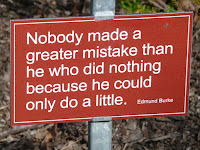On a beautiful wine farm near Stellenbosch, SA, just under
400 ecosystem services researchers, practitioners and other ES folks got
together to discuss, present and exchange knowledge and ideas at the ESP Conference 2015. The sessions
provided a broad overview of the different fields of study that fall under the
ESP header, from urban and agro-ecosystems to marine and forest areas. The
plenary sessions demonstrated the leading role of
South-African academics in ES policy and management – we are looking forward to
the plenary of Belinda Reyers at the next ESPA
science conference!
Many ESPA researchers were present, providing stimulating talks on both the supply and demand side of ES. James Bullock argued for the suitability of simple models based on work of the WISER project; ESPA’s project on biofuels in Sub-Saharan Africa demonstrated the impact of biofuels on ecosystem services, stakeholder groups and poverty indices. Simon Willcock got himself ranked as third most active tweeter of the conference, tweet-debating about uncertainty and accuracy.
We, ESPA Fellows Cecile
Bidaud (p4ges) and Marije Schaafsma (assets/ecolimits), got ourselves in a bit of trouble by organising an
Ignite presentation session
– a presentation of 20 slides with only 20 seconds per slide. Speed-talking was
not sufficient for some of the presenters (“this is horrible!” shouted one of
the presenters halfway through). But the format forced us to use focused presentations
with only a few key messages. After each series of 3 presentations, also
featuring great work by Fellow Anne Nyambane and ESPA
researcher Charlie Langan, the attendees formed 3 groups and each group had
8 minutes to question each presenter, allowing for much more interaction than
in more standard session formats.
 |
| Cecile in discussion with attendees (left), Marije overspending her 20 second budget (right) |
The field trips on Wednesday were perhaps best described as a micro-cosmos of the good, bad and ugly of pro-poor work for ES. Biodiversity and ecosystem services were enjoyed (in alcoholic and non-alcoholic forms), lunches shared, trees planted, but in the end happiness impacts were unequally distributed. Yet, as the sign in the Kirstenbosch Botanical Garden said,
Perhaps my take-home message from the conference was that attention
to the social side of the ES remains a challenge. Many ES assessment
efforts seem to stop at the level of functions, sometimes goods, and supply
rather than demand. Why do so many ES presentations still start
with the ecological problem, trying to work towards, but never really reaching,
the right of the ES cascade? Why don’t we change perspectives and start from
the right, with wellbeing problems of people?
Fortunately, the grand finale of a very enjoyable and
relevant conference was a superb presentation by Lorenzo
Fioramonti on the nonsense of GDP growth, which kept hopes for a world focused
on wellbeing alive.

No comments:
Post a Comment